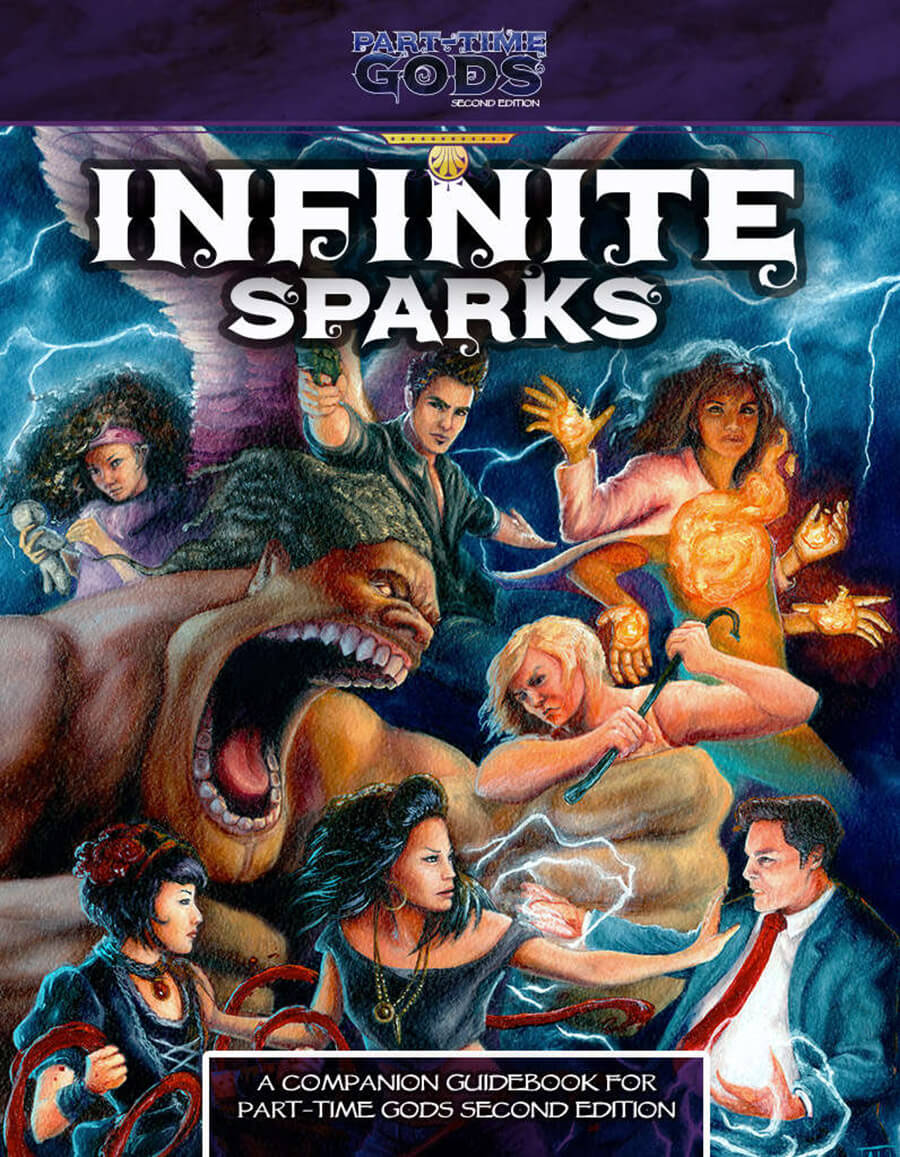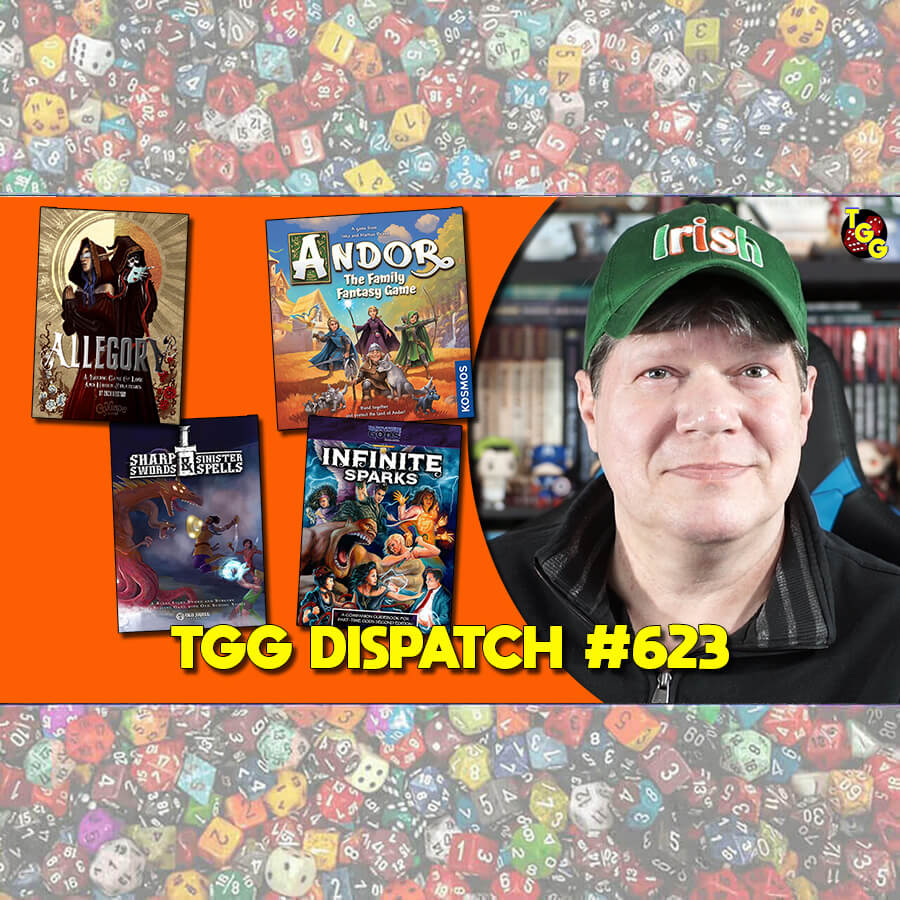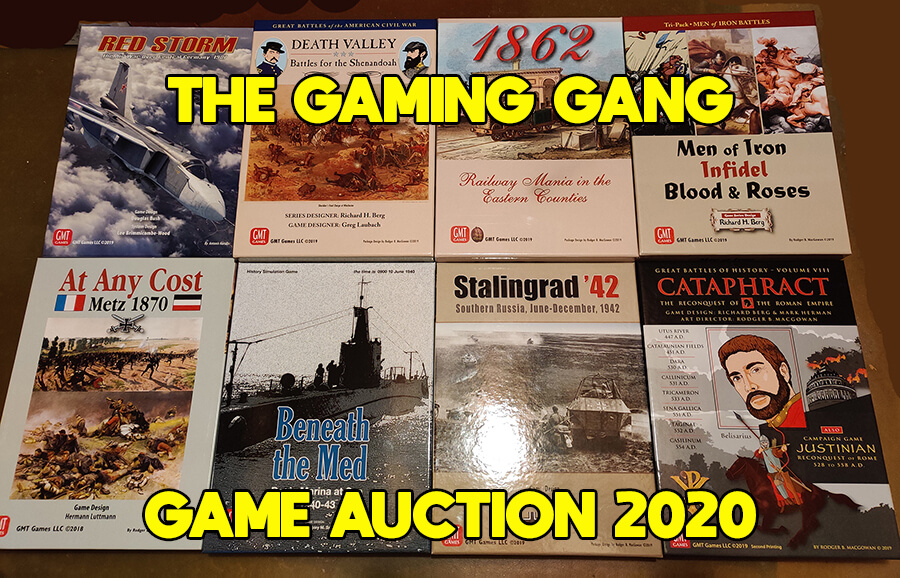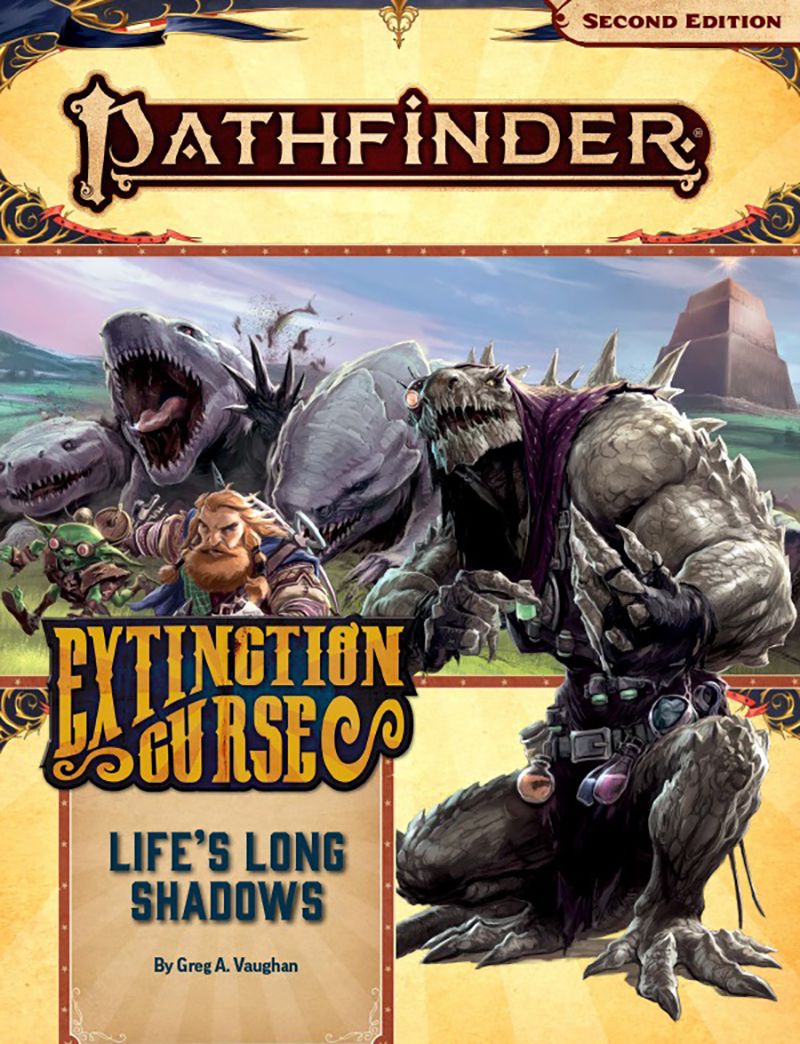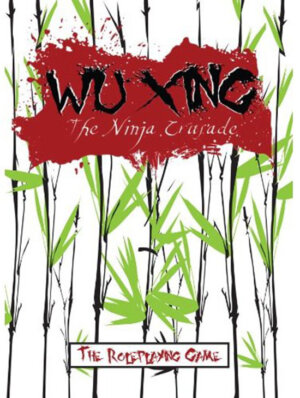
Publisher: Third Eye Games
Writer: Eloy Lasanta
Year: 2010
Players: 2 or more
Ages: 12+
Category: Fantasy Martial Arts Action RPG
Pages: 220
Retail Price: $29.95 softcover; $13.49 PDF
The Emperor has called for blood! All ninja of the Izou Empire face the crushing might of their own nation. Where once there was peace, now there is only destruction and death. The ninja are forced to fight back, wielding the ancient art of chi manipulation alongside their shuriken and katana. Empire soldiers pack their own secret weapons to combat ninja wushu… powerful firearms.
Wu Xing: The Ninja Crusade is an epic fantasy RPG filled with over the top martial arts action set in a realm influenced by traditional Asian themes. There’s also an obvious nod to many of the popular hand to hand combat anime series (sometimes referred to as wuxia) over the years. The mechanics of play are based upon a single twenty sided die for resolution and is built upon Third Eye’s Dynamic Gaming System.
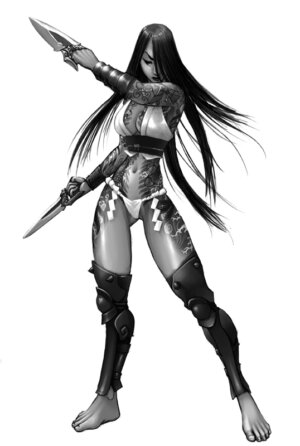
As far as the term “ninja” and the definition of these warriors within the game, they are a bit different than their historical counterparts. Yes, I know ninjas aren’t supposed to have actually existed but for argument sake let’s say they did. In history ninja were the secret assassins of Japan and would have more than likely not been the types of people you’d want to run across. In Wu Xing, the ninja encompass some of the aspects of their Japanese brethren (stealth, able to blend in with their surroundings, and so forth) but are more along the lines of rebels and freedom fighters. The ninja also have the power to wield the magical force known as “chi.”
Early in the rules is the Ninja vs. The Empire section and this is an introduction to the Wu Xing setting, the many clans, as well as what has led to the current Ninja Crusade. There have been plenty of wars in the history of the land and the Crusade is simply the latest. The emperor of the Izou Empire has declared all ninja are to be wiped out! You’ll need to know not only what it takes to be a ninja but also what it will take to survive these troubled times.
Next is the topic of the various clans in Wu Xing. Surprisingly this information is presented before character creation but I suppose it might be more important to understand the clans before you decide which you’ll choose membership in.
The clans from the book are as follows:
Bamboo Herbalists: Genius doctors and thrillseekers, they are premiere medical ninja
Blazing Dancers: Entertainers, well known for their acrobatic acts and fiery performances
Grasping Shadows: Traditionalists, spies and assassins, they wield power over shadows and stealth
Hidden Strands of Fate: Master manipulators, well adept at pulling strings (both literal and political)
Living Chronicle: Historians, keeping knowledge alive in their minds and on their bodies
Pack of the Black Moon: Ranchers and farmers, they are experts on animals, especially dogs
Recoiling Serpents: Fallen lords, masters of poison and survival
Virtuous Body Gardeners: Feisty warriors and artists, the newest clan that specializes in tattoos
Wardens of Equilibrium: Merchants, who seek to balance the world and turning a profit while doing so
Will of Iron: Sheriffs, they believe in invoking justice wherever they go
Ronin: The clanless, composed of exiles, rouges and wanderers
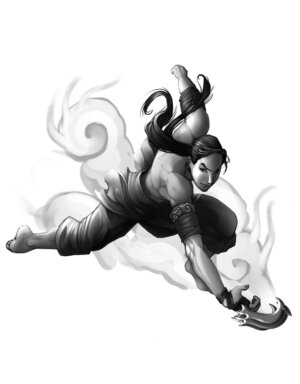
Speaking of characters Eloy Lasanta has incorporated many key concepts of the ninja into the character creation process itself. You’ll begin by choosing a concept which is along the lines of a character class. Next you’ll select a passion and this actually plays out in game as this should mold your character as far as how you role play with them and there are mechanics which utilize your passion Your character might be greedy or in search of power or live by a code of honor and if you play your character accordingly you’ll score extra experience points. You’ll also choose one of the five elements which will then give your character Chi bonuses and penalties. Your element will also affect your balance of ying and yang and these two factors have a lot to do with your Washu.
Attributes in the game are fairly standard fare and the skills available are varied enough without getting out of hand and giving off an “everything but the kitchen sink” sort of feeling. As you come toward the end of creating your character you’ll select a clan and a fighting style. Each clan focuses on a few different styles so just picking a clan doesn’t lock you into only one way to lay out a beat down.
Finally you’ll select your Wushu, which are more along the lines of supernatural abilities as opposed to straight out magic. Clans also have favored wushu as well and the wushu is also tied directly to a skill so you don’t have to learn a completely new mechanic as these special abilities play out just as you would for skills. There are a good number of wushu to pick from and these really give the system that anime flavor as combat is never a vanilla experience and can provide a lot of crazy all out butt whooping.
Combat in Wu Xing has a much different flavor than the standard RPG. Each round of combat breaks down into 20 counts. Every action you take, as well as any reaction, has a speed which corresponds to a number of counts required to pull it off. There is initiative rolls and this impacts when characters are able to act but the amount of time it will take to perform the action is more important as actions normally will not resolve simultaneously. This creates a highly dynamic and cinematic take on combat which obviously plays well for a game of this nature. Since this is a setting that focuses on a lot of up close and personal fighting, I can easily understand taking a more complicated approach to combat.
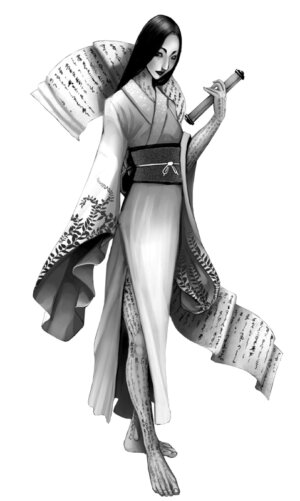
In the end if you are looking for a new RPG that’s of the beaten track Wu Xing is a good buy – even if just for the combat mechanics alone – but if you’re a fan of wuxia influenced anime and film I can wholeheartedly say Wu Xing is a must buy!
- Tales of Argosa: Caverns of Shennog Reviewed - Apr 17, 2025
- Castles & Crusades Reforged: Monsters & Treasure Reviewed - Apr 16, 2025
- Pathfinder NPC Core Reviewed - Apr 15, 2025



